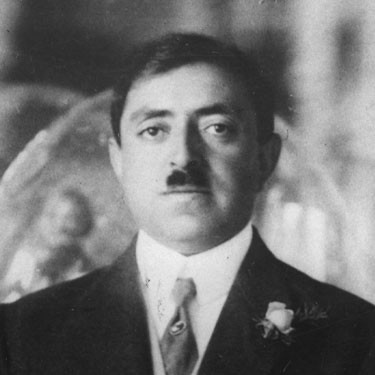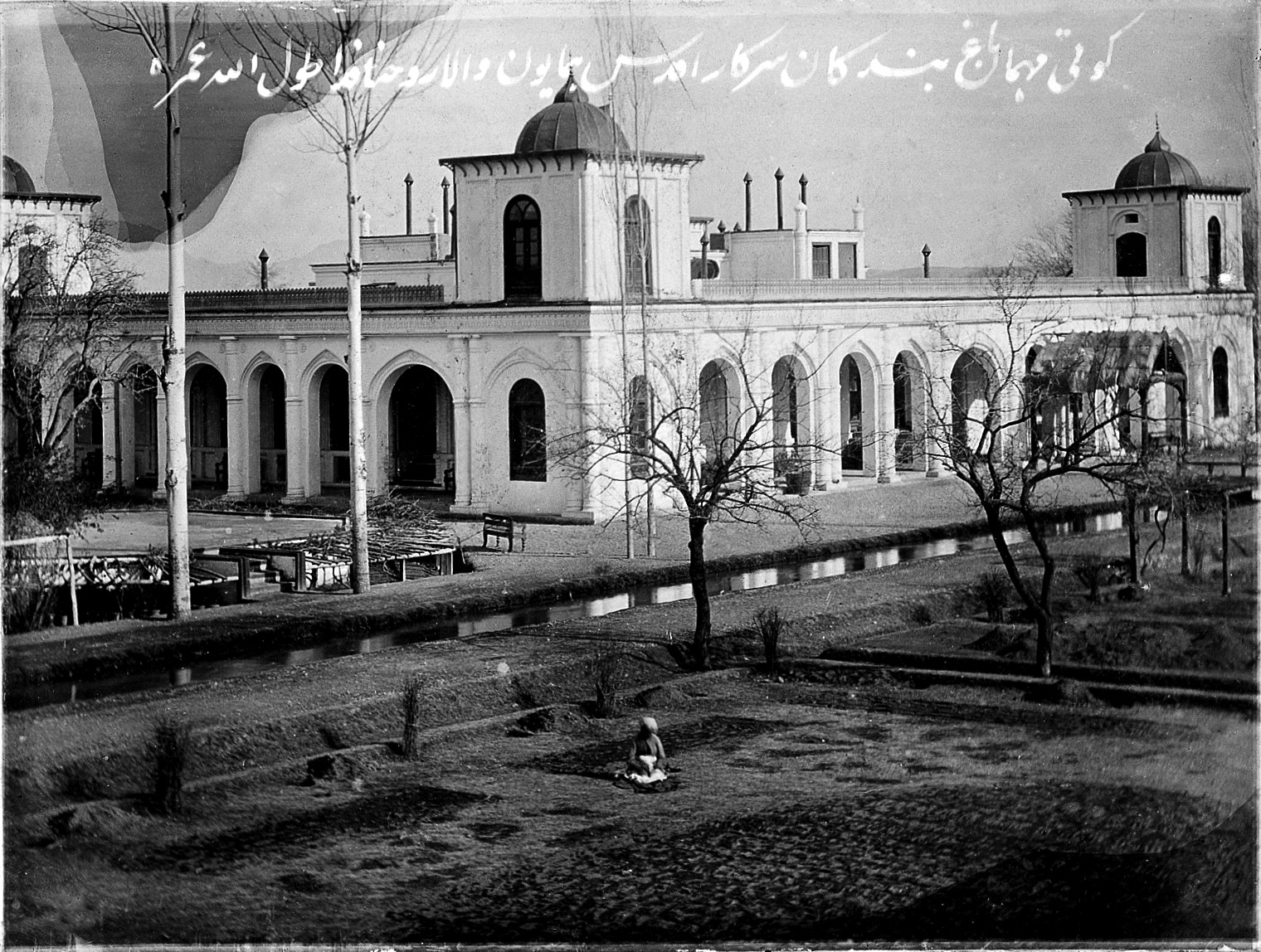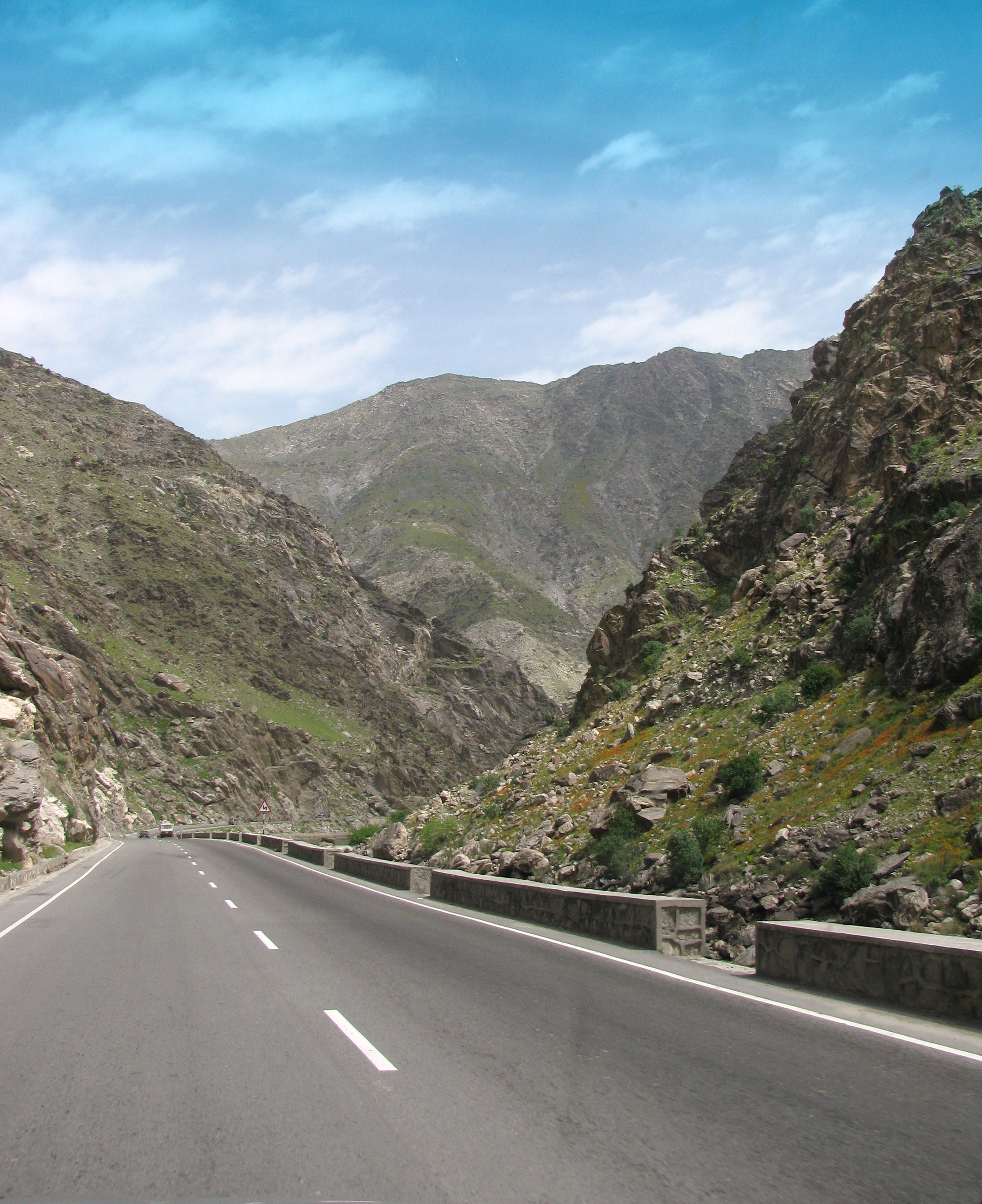|
Afghan Independence Day
Afghan Independence Day is celebrated as a national holiday in Afghanistan on 19 August to commemorate the Anglo-Afghan Treaty of 1919 and relinquishment from British protectorate status. The treaty granted a complete neutral relation between Afghanistan and Britain. Afghanistan had become a British protectorate after the Treaty of Gandamak was signed (1879) in the Second Anglo-Afghan War. Background The First Anglo-Afghan War (1839–42) led to the British force taking and occupying Kabul. After this, due to strategic errors by Elphinstone, the British force was annihilated by Afghan forces under the command of Akbar Khan somewhere at the Kabul–Jalalabad Road, near the city of Jalalabad. After this defeat, the British-Indian forces returned to Afghanistan on a special mission to rescue their prisoners of war (POWs) and afterward withdrew until coming back in order to commence the Second Anglo-Afghan War. The Second Anglo-Afghan War (1878–80) first led to a British ... [...More Info...] [...Related Items...] OR: [Wikipedia] [Google] [Baidu] |
Pashto Language
Pashto (,; , ) is an Eastern Iranian language in the Indo-European language family. It is known in historical Persian literature as Afghani (). Spoken as a native language mostly by ethnic Pashtuns, it is one of the two official languages of Afghanistan alongside Dari,Constitution of Afghanistan �''Chapter 1 The State, Article 16 (Languages) and Article 20 (Anthem)''/ref> and it is the second-largest provincial language of Pakistan, spoken mainly in Khyber Pakhtunkhwa and the northern districts of Balochistan. Likewise, it is the primary language of the Pashtun diaspora around the world. The total number of Pashto-speakers is at least 40 million, (40 million) although some estimates place it as high as 60 million. Pashto is "one of the primary markers of ethnic identity" amongst Pashtuns. Geographic distribution A national language of Afghanistan, Pashto is primarily spoken in the east, south, and southwest, but also in some northern and western parts of the country. The ... [...More Info...] [...Related Items...] OR: [Wikipedia] [Google] [Baidu] |
Second Anglo-Afghan War
The Second Anglo-Afghan War (Dari: جنگ دوم افغان و انگلیس, ps, د افغان-انګرېز دويمه جګړه) was a military conflict fought between the British Raj and the Emirate of Afghanistan from 1878 to 1880, when the latter was ruled by Sher Ali Khan of the Barakzai dynasty, the son of former Emir Dost Mohammad Khan. The war was part of the Great Game between the British and Russian empires. The war was split into two campaigns – the first began in November 1878 with the British invasion of Afghanistan from India. The British were quickly victorious and forced the Amir – Sher Ali Khan to flee. Ali's successor Mohammad Yaqub Khan immediately sued for peace and the Treaty of Gandamak was then signed on 26 May 1879. The British sent an envoy and mission led by Sir Louis Cavagnari to Kabul, but on 3 September this mission was massacred and the conflict was reignited by Ayub Khan which led to the abdication of his brother Yaqub. The second campaign ende ... [...More Info...] [...Related Items...] OR: [Wikipedia] [Google] [Baidu] |
Qajar Iran
Qajar Iran (), also referred to as Qajar Persia, the Qajar Empire, '. Sublime State of Persia, officially the Sublime State of Iran ( fa, دولت علیّه ایران ') and also known then as the Guarded Domains of Iran ( fa, ممالک محروسه ایران '), was an Iranian state ruled by the Qajar dynasty, which was of Turkic origin,Cyrus Ghani. ''Iran and the Rise of the Reza Shah: From Qajar Collapse to Pahlavi Power'', I. B. Tauris, 2000, , p. 1William Bayne Fisher. ''Cambridge History of Iran'', Cambridge University Press, 1993, p. 344, Dr Parviz Kambin, ''A History of the Iranian Plateau: Rise and Fall of an Empire'', Universe, 2011, p.36online edition specifically from the Qajar tribe, from 1789 to 1925.Abbas Amanat, ''The Pivot of the Universe: Nasir Al-Din Shah Qajar and the Iranian Monarchy, 1831–1896'', I. B. Tauris, pp 2–3; "In the 126 years between the fall of the Safavid state in 1722 and the accession of Nasir al-Din Shah, the Qajars evolved from ... [...More Info...] [...Related Items...] OR: [Wikipedia] [Google] [Baidu] |
Russian Empire
The Russian Empire was an empire and the final period of the Russian monarchy from 1721 to 1917, ruling across large parts of Eurasia. It succeeded the Tsardom of Russia following the Treaty of Nystad, which ended the Great Northern War. The rise of the Russian Empire coincided with the decline of neighbouring rival powers: the Swedish Empire, the Polish–Lithuanian Commonwealth, Qajar Iran, the Ottoman Empire, and Qing China. It also held colonies in North America between 1799 and 1867. Covering an area of approximately , it remains the third-largest empire in history, surpassed only by the British Empire and the Mongol Empire; it ruled over a population of 125.6 million people per the 1897 Russian census, which was the only census carried out during the entire imperial period. Owing to its geographic extent across three continents at its peak, it featured great ethnic, linguistic, religious, and economic diversity. From the 10th–17th centuries, the land ... [...More Info...] [...Related Items...] OR: [Wikipedia] [Google] [Baidu] |
Abdur Rahman Khan
Abdur Rahman Khan GCSI (Pashto/Dari: ) (between 1840 and 1844 – 1 October 1901) was Emir of Afghanistan from 1880 to his death in 1901. He is known for uniting the country after years of internal fighting and negotiation of the Durand Line Agreement with British India. Abdur Rahman Khan was the first child and only son of Mohammad Afzal Khan, and grandson of Dost Mohammad Khan, founder of the Barakzai dynasty. Abdur Rahman Khan re-established the writ of the Afghan government after the disarray that followed the second Anglo-Afghan war. He became known as ''The Iron Amir'' because his government was a military despotism. This despotism rested upon a well-appointed army and was administered through officials subservient to an inflexible will and controlled by a widespread system of espionage. The nickname, ''The Iron Amir'', is also associated due to his victory over a number of rebellions by various tribes who were led by his relatives. One source says that during his reign t ... [...More Info...] [...Related Items...] OR: [Wikipedia] [Google] [Baidu] |
Battle Of Kandahar (1880)
The Battle of Kandahar, 1 September 1880, was the last major conflict of the Second Anglo-Afghan War. The battle in southern Afghanistan was fought between the British forces under command of General Roberts and the Afghan forces led by Ayub Khan. It ended with a decisive British victory, having inflicted nearly 3,000 casualties in total on the routed Afghans. Background In May 1879, after the death of the Amir Sher Ali Khan, Sir Louis Cavagnari negotiated and signed the Treaty of Gandamak with his successor, Mohammad Yaqub Khan. The treaty obliged the Afghans to admit a British resident governor at Kabul; a position Cavagnari himself took up in July. However, on 3 September, Cavagnari and the other European members of the mission were massacred in a sudden rising of Afghan rebel troops. After Yakub Khan had been dethroned and exiled by the British for suspected collusion in the murder of Cavagnari, feelers were put out for two replacement candidates: his younger brother, Ayub ... [...More Info...] [...Related Items...] OR: [Wikipedia] [Google] [Baidu] |
Battle Of Maiwand
The Battle of Maiwand (Dari: نبرد میوند, Pashto: د ميوند جگړه), fought on 27 July 1880, was one of the principal battles of the Second Anglo-Afghan War. Under the leadership of Ayub Khan, the Afghan forces defeated a much smaller British force consisting of two brigades of British and Indian troops under Brigadier-General George Burrows, albeit at a high price: between 2,050 and 2,750 Afghan warriors were killed, and probably about 1,500 wounded. British and Indian forces suffered 969 soldiers killed and 177 wounded. Prelude Before the battle, the campaign had gone well for the British. They had defeated Afghan tribesmen at Ali Masjid, Peiwar Kotal, Kabul, and the Battle of Ahmed Khel, and they had occupied numerous cities and towns, including Kandahar, Dakka, and Jalalabad. Ayub Khan, Sher Ali Khan's younger son, who had been holding Herat during the British operations at Kabul and Kandahar, set out towards Kandahar with a small army in June, and a brig ... [...More Info...] [...Related Items...] OR: [Wikipedia] [Google] [Baidu] |
Prisoner Of War
A prisoner of war (POW) is a person who is held captive by a belligerent power during or immediately after an armed conflict. The earliest recorded usage of the phrase "prisoner of war" dates back to 1610. Belligerents hold prisoners of war in custody for a range of legitimate and illegitimate reasons, such as isolating them from the enemy combatants still in the field (releasing and repatriating them in an orderly manner after hostilities), demonstrating military victory, punishing them, prosecuting them for war crimes, exploiting them for their labour, recruiting or even conscripting them as their own combatants, collecting military and political intelligence from them, or indoctrinating them in new political or religious beliefs. Ancient times For most of human history, depending on the culture of the victors, enemy fighters on the losing side in a battle who had surrendered and been taken as prisoners of war could expect to be either slaughtered or enslaved. Ear ... [...More Info...] [...Related Items...] OR: [Wikipedia] [Google] [Baidu] |
Associated Press
The Associated Press (AP) is an American non-profit news agency headquartered in New York City. Founded in 1846, it operates as a cooperative, unincorporated association. It produces news reports that are distributed to its members, U.S. newspapers and broadcasters. The AP has earned 56 Pulitzer Prizes, including 34 for photography, since the award was established in 1917. It is also known for publishing the widely used '' AP Stylebook''. By 2016, news collected by the AP was published and republished by more than 1,300 newspapers and broadcasters, English, Spanish, and Arabic. The AP operates 248 news bureaus in 99 countries. It also operates the AP Radio Network, which provides newscasts twice hourly for broadcast and satellite radio and television stations. Many newspapers and broadcasters outside the United States are AP subscribers, paying a fee to use AP material without being contributing members of the cooperative. As part of their cooperative agreement with the AP, most ... [...More Info...] [...Related Items...] OR: [Wikipedia] [Google] [Baidu] |
Jalalabad
Jalalabad (; Dari/ ps, جلالآباد, ) is the fifth-largest city of Afghanistan. It has a population of about 356,274, and serves as the capital of Nangarhar Province in the eastern part of the country, about from the capital Kabul. Jalalabad is located at the junction of the Kabul River and the Kunar River in a plateau to the south of the Hindu Kush mountains. It is linked by the Kabul-Jalalabad Road to the west and Peshawar in Khyber Pakhtunkhwa, Pakistan, to the east through Torkham and the Khyber Pass. Jalalabad is a leading center of social and trade activity because of its proximity with the Torkham border checkpoint and border crossing, away. Major industries include papermaking, as well as agricultural products including oranges, lemon, rice, and sugarcane, helped by its warm climate. It hosts Afghanistan's second largest educational institute, Nangarhar University. For centuries the city has been favored by Afghan kings and it is a cultural significance in Afg ... [...More Info...] [...Related Items...] OR: [Wikipedia] [Google] [Baidu] |
Kabul–Jalalabad Road
The Kabul–Jalalabad Road, also known as National Highway 08 (NH08), is a highway running between the Afghan cities of Kabul (the national capital) and Jalalabad, the largest city in eastern Afghanistan and capital of Nangarhar Province. A portion of the road runs through the Tang-e Gharu gorge. The road is about long and travels upwards from an elevation of 575 m in Jalalabad to 1790 m in Kabul. Because of the many traffic accidents, the road between Jalalabad and Kabul is considered to be one of the most dangerous in the world. It consists of narrow roads with sharp turns past high cliffs and a valley of the Kabul River below, with which it runs parallel. It is a large part of the Afghan leg of the Grand Trunk Road. Parts of the road follow the British Army's disastrous 1842 retreat from Kabul. See also *Highway 1 (Afghanistan) ), is a two-lane road network circulating inside Afghanistan, connecting the following major cities (clockwise): Kabul, Maidan Shar, Ghazni, ... [...More Info...] [...Related Items...] OR: [Wikipedia] [Google] [Baidu] |
Wazir Akbar Khan
Wazīr Akbar Khān (Pashto/Dari: ; 1816-1847), born Mohammad Akbar Khān () and also known as Amīr Akbar Khān (), was an Afghan prince, general, emir for a year, and finally wazir/heir apparent to Dost Mohammad Khan until his death in 1847. His fame began with the 1837 Battle of Jamrud, while attempting to regain Afghanistan's second capital Peshawar from the Sikh Empire. Wazir Akbar Khan was militarily active in the First Anglo-Afghan War, which lasted from 1839 to 1842. He is prominent for his leadership of the national party in Kabul from 1841 to 1842, and his 1842 retreat from Kabul, massacre of Elphinstone's army at the Gandamak pass before the only survivor, the assistant surgeon William Brydon, reached the besieged garrison at Jalalabad on 13 January 1842. Wazir Akbar Khan became the list of monarchs of Afghanistan, emir of Afghanistan in May 1842, and ruled until Dost Mohammad Khan's return in 1843. In 1847 Wazir Akbar Khan died of cholera. Early life Akbar was born ... [...More Info...] [...Related Items...] OR: [Wikipedia] [Google] [Baidu] |


_WDL11496.png)








